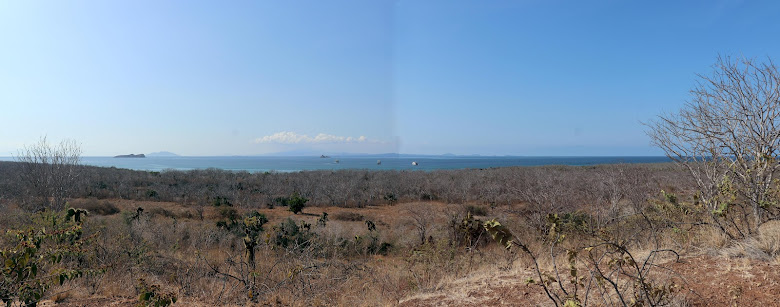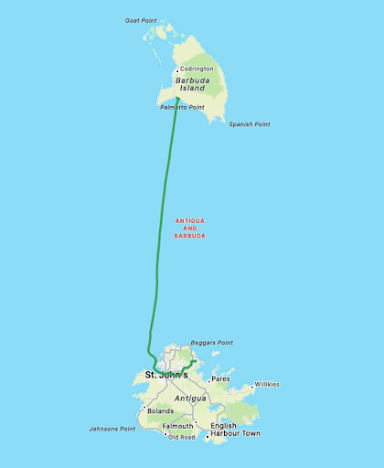At 7:15 a.m. we were on the waterfront of St. Johns, boarding a fast speedboat trip to Barbuda, the smaller bit of Antigua and Barbuda.
A Madagascar periwinkle, not native, of course, but transported around the world as a supposed diabetes cure.
I mean, one has to ask, does the world need all these aerial pirates, seabirds that can't land on the water because they can't get their feathers wet, and so spend their lives harassing other birds until they throw up, and the frigatebird eats the puke. This is what happens when you escape Noah's triage, and just float above the ark, unaffected by the global flood.
(No, I don't believe any of this)
The trip back to Codrington was miserable. Cramped, and the combination of a stiff breeze and waves threw up enough spray that sitting in the port stern of the boat, I got soaked. Still, the nice thing about the tropics is you dry out quickly. We ate a box lunch at the Martello Tower and then shiped back to Antigua, for a van transfer to the airport.
In addition, thanks to Peg Abbott
At/on the way to the frigatebird colony
- Spotted sandpiper
- Barn Swallow
On the way to Codrington
- Green-throated Carib
- Antillean Crested Hummingbird (Lesser Antilles)
- Ruddy Turnstone
- Brown Pelican
- Green Heron
- American Kestrel
- Caribbean Elaenia
- Gray Kingbird
- Caribbean Martin
- Carib Grackle
- Lesser Antillean Bullfinch
- Black-faced Grassquit
The rest of the day was hell. We got to the airport about 2 p.m.. Then we stood in a line to check in. Then we stood in a long-long line for the security check. Then we stood in a line to check our passports. Then we stood in a line for a bag check. Then we stood in a line waiting to board, and another couple of lines, and then finally we took off, over five hours later.
And this was just to get out of Antigua!
Our sunset, 45 minute flight down to Barbados was quite beautiful, as were the admission procedures, which were fast and efficient. What a contrast. Our hotel, the Blue Horizon, was OK, and there was food.


















No comments:
Post a Comment